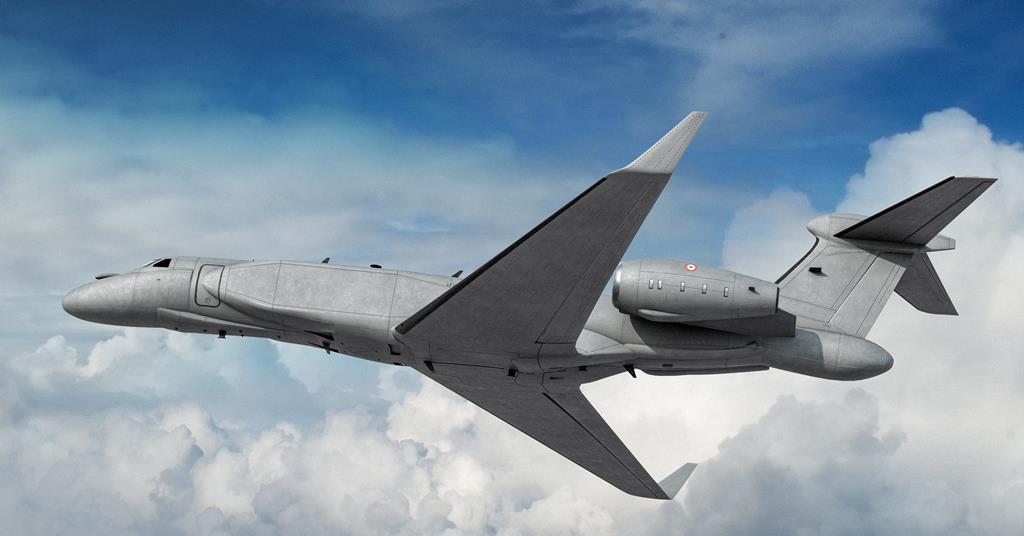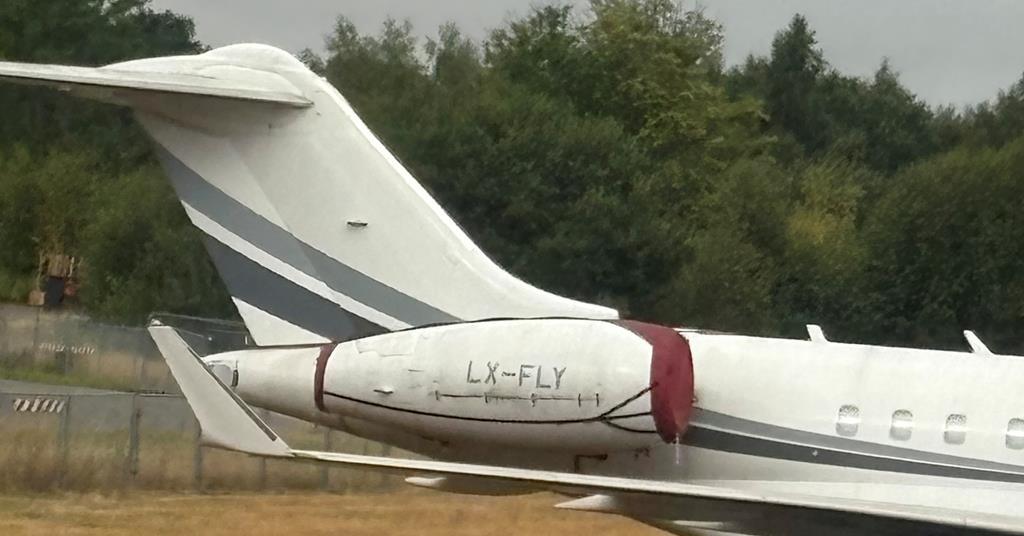Manufacturers of long-range executive aircraft are enjoying a spike in demand as military operators ask industry to adapt their products for a wide variety of special mission tasks.
With their long-endurance performance, plentiful onboard power and ability to carry a broad variety of intelligence-gathering sensors, the current breed of big business jets is attracting an increasing number of customers for military conversions.
Multiple special mission roles have already been found for the Bombardier Global 6000/6500 and Gulfstream G550, while an adaptation of Dassault Aviation’s Falcon 8X was recently flown for the first time in modified form.
Bombardier’s long-range offering forms the basis for numerous special mission variants, with current and contracted operator nations to include Germany, Sweden, Turkey, the United Arab Emirates and the USA.
Special mission applications include airborne early warning and control (AEW&C), communications relay, electronic intelligence, reconnaissance, and signals intelligence (SIGINT).
STRIKING ADAPTATION
The most visually striking adaptation is Saab’s GlobalEye configuration, which married its above-fuselage-mounted Erieye ER active electronically scanned array (AESA) radar with the Global 6000 for the UAE air force. The multi-role surveillance system is capable of simultaneously monitoring airborne, maritime and land-based threats.
Saab has delivered five examples to its launch customer, and has three more on contract for the Swedish air force.
Source: Saab
Bombardier supplies the airframe for Saab’s GlobalEye system, recently selected by France
At the Paris air show in mid-June, France’s DGA defence procurement agency signed a declaration of intent with Saab covering the possible purchase of GlobalEyes to replace the nation’s Boeing 707-based E-3F Airborne Warning and Control System jets.
Paris intends to order two, and take options for two more, with contract negotiations “expected to be finalised in the coming months”.
Described as enabling France to “maintain full sovereign control of its airborne early warning and control capability”, the pact is supported by modification firm Sabena Technics.
On 20 June, Bombardier announced that it had received a firm order from Saab to deliver two Global 6500s – the new baseline for GlobalEye conversions.
Stockholm, meanwhile, will be the next to field the capability, via an accelerated schedule.
Sweden ordered two of the jets in June 2022, and signed for a third two years later, after its accession to NATO membership. It then pledged to donate its pair of in-service Saab 340 AEW&C aircraft to Ukraine, and to “expedite” the introduction of its successor system from an original schedule of 2027.
“We need capability first, and then we will get the full capability later,” Swedish air force chief of staff Major General Jonas Wikman says of the future ‘S 106’ system.
“It will be way better than the current ones,” he says of the interim standard versus the withdrawn Saab 340s. “But it will need to be modified again to be what was the intention from the beginning.”
Saab had in late May announced a plan to increase its conversion capacity to four jets per year for the GlobalEye system from around 2030. It also is currently offering the capability to South Korea, facing competition from Boeing’s 737NG-based Wedgetail – a type already operated by Seoul.
SURVEILLANCE REQUIREMENTS
The US military has also turned to the Bombardier platform to address a raft of surveillance requirements, including the US Air Force’s (USAF’s) adoption of the Global 6000 to expand its fleet in the E-11A battlefield airborne communications node role.
US Army commitments, meanwhile, span several derivatives of the Global 6000/6500, respectively named Ares, Athena-R/S, and Hades.
Delivered by prime contractor L3Harris Technologies, the Ares is a ground-surveillance jet, while the same company has provided radar-equipped Athena-R reconnaissance platforms.
“The two Athena-Rs are now operational in Korea,” L3Harris Integrated Mission Systems president Jon Rambeau says. “The current contract length is at least five years, and we would anticipate that it would extend longer than that,” he adds.
Rival Sierra Nevada will deliver Athena-S SIGINT aircraft and also six Global 6500-based Hades (High Accuracy Detection and Exploitation System) platforms for use by the army.
For the German air force, Hensoldt is supplying a sensor package for a trio of Pegasus SIGINT assets derived from the Global 6000, while the Turkish air force is set to field four jets adapted for tasks including jamming.
Meanwhile, the number of operational military tasks performed using Gulfstream’s G550 is also increasing, thanks to a number of ongoing development activities.
In mid-July, L3Harris announced a $300 million programme to supply Italy with a pair of
electronic attack (EA) aircraft based on the long-range business jet.
Source: L3Harris Technologies
Italy is to field two EA-37B-variant adaptations of the G550
“The modified G550 will provide the Italian air force with an airborne jamming ability with range, altitude and endurance to disrupt enemy command and control, communications radars and navigation systems from an extended distance,” the US mission system provider says.
Italy’s order represents the first Foreign Military Sales deal for the EA-37B Compass Call system, which is already entering service with the USAF.
“We will be working on these aircraft and building them with the Italian air force in the coming years,” Rambeau said while announcing the contract at the Royal International Air Tattoo in the UK.
“The aircraft are with Gulfstream, which is currently putting the [sensor housing] shapes on the outside,” he says.
FLEET REPLACEMENT
Being acquired to replace EA-roled Lockheed Martin EC-130Hs, the USAF’s new Compass Call fleet will eventually total 10 jets. Its 43rd Electronic Combat Squadron on 2 May conducted a first mission training sortie with the EA-37B from Davis-Monthan AFB in Arizona.
Italy’s future introduction of the dedicated EA platform will mark a further expansion to its G550-based special mission fleet.
L3Harris also is advancing work on two examples in a Joint Airborne Multi-mission, Multi-sensor System (JAMMS) configuration, under a deal signed in February 2021.
Describing that version as a “companion aircraft” for Rome’s future Compass Call jets, Rambeau says: “JAMMS is [for] passive signals collection, so they can work as a team.”
Source: L3Harris Technologies
L3Harris Technologies is on contract to deliver Rome’s pair of JAMMS-roled G550s
Previously described as to serve in a “strategic intelligence, surveillance, reconnaissance and electronic warfare” role, the aircraft’s configuration includes a canoe fairing beneath the forward fuselage. It also has a retractable electro-optical/infrared sensor turret, stored within a housing beneath the tail.
The Italian air force already operates two E-550A conformal airborne early warning aircraft, with Elta Systems’ EL/W-2085 AESA radar as their primary sensor.
Israel and Singapore also operate the G550 in the AEW&C role, with the former and the USAF also using the type for reconnaissance tasks.
The Royal Australian Air Force (RAAF) also is to add the platform to its inventory in the L3Harris-prepared MC-55A Peregrine electronic warfare standard, with a first delivery expected before the end of this year.
A first Peregrine was originally slated for handover in 2023, but this was pushed back owing to challenges with modifying the airframe with a long canoe fairing under the fuselage and other external changes. Supplemental type certification was secured late last year.
Although the capability has yet to enter use, the US Defense Security Cooperation Agency on 6 August detailed a potentially $404 million Baseline 2 Upgrade deal for the RAAF’s planned four-strong fleet.
Also to cover support services, the package would include “major modifications” for the MC-55A.
Meanwhile, France is making progress with the first military adaptation for Dassault’s Falcon 8X trijet, with the
modified Archange making its debut flight in July.
Paris in December 2019 signed a contract covering development work and the procurement of two of the long-range type for SIGINT duties. It now will acquire three examples, with Dassault responsible for airframe modifications, including installing a large sensor fairing beneath the forward fuselage.
STRATEGIC BOOST
To be equipped with Thales’s CUGE mission system, the platforms will be “capable of [simultaneously] detecting and analysing radar and communications signals”, and will “contribute to France’s ability to collect and analyse strategic information”, the DGA says.
Thales has detailed the system’s capabilities as involving “multi-polarisation antennas and artificial intelligence technologies to automate data processing”.
Source: DGA
The French air force will operate its Falcon 8X-based Archange for signals intelligence duties
At the time of the contract being announced, France planned for the Archange system to enter service in 2025, replacing two C-160G Gabriel SIGINT assets. The new type’s introduction will end a brief capability gap caused by a decision to retire the French air force’s aged Transall-based special mission aircraft in 2022.
According to its current schedule, the DGA says all three Archange aircraft will be fielded before the end of France’s 2024-2030 Military Planning Act period.




